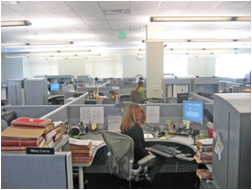Recycling Checklist
Procuring products? Think about minimizing waste before you buy.
At Purchase
Reduce Packaging
- Buy in bulk
- Prioritize products with minimal packaging
Reduce Disposal Waste
- Prioritize reusable items over single-use
- Consider ease of maintenance and repair
Increase Recyclability
- Look for items that can be easily disassembled into component materials
Ensure Local Recycling
- Check that materials can be recycled locally:
Disposal
- For electronics, check federal recycling requirements. Be sure to use a Certified Electronics Recycler.
- Follow the steps outlined by GSA’s Federal Acquisition Service (FAS) for all federal personal property. This includes a wide variety of goods from computers to furniture to vehicles.
Additional Resources
Related Topics
Durable Goods
Durable goods have a long useful life (typically two years or more), are replaced infrequently, and typically have a high cost per unit. This is in contrast to ongoing consumables which have a relative low-cost per unit and are replaced frequently. Examples of durable goods include furniture, printers, computers, refrigerators and televisions. Greenhouse gas emissions can be reduced by properly disposing of durable goods at the end of their useful life through re-use programs or recycling. Donate used furniture or electronics to a local program or charity, or find a certified vendor who will responsibly recycle the materials.
Whole Building Design Guide | Life-Cycle Cost Analysis (LCCA)![]()
Whole Building Design Guide | Evaluating and Selecting Green Products![]()
Recycling
Recycling is the process of collecting and processing materials (that would otherwise be thrown away as trash) and remanufacturing them into new products. Recycling support stations and the education of occupants and janitorial staff are the backbone of a successful waste diversion plan. Start by confirming with the recycling hauler and compost service what materials are acceptable and the proper collection method. Separate, color-coded, well-labeled and strategically placed recycling containers and waste receptacles make sorting and collection convenient and support occupant participation.
Sustainable Practices in Leased Facilities
For tenants in leased facilities, it is important to understand their role in advancing sustainable practices, as well as the role of the landlord and facility manager. The management of energy and water consumption, solid waste, custodial services, and product and material acquisition requires communication and ongoing coordination between the landlord, who is typically responsible for utilities and service contracts, and the tenant, whose occupancy and behavior impacts facility operations. Tenants whose utilities are included in their lease agreement should coordinate with the landlord and facility manager to monitor and report performance. Tenants should also coordinate with the landlord and facility manager to ensure occupants, contractors, and operations staff are educated about the sustainability objectives of both the landlord and tenant and how they can support these efforts.
WBDG - Whole Building Design Guide | Optimize Operational and Maintenance Practices

